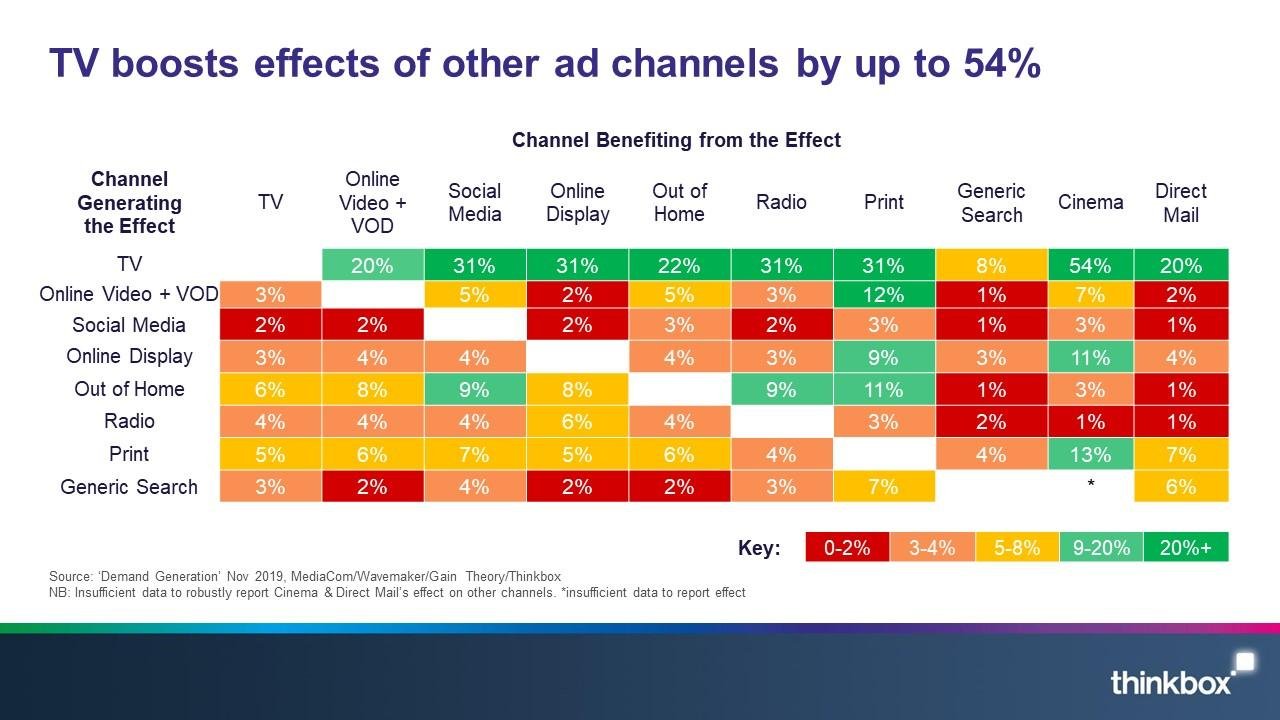Integrated Marketing Strategies: Why Are They Important?
Effects that each media channel generates to others.
Key Takeaways
Integrated marketing unifies all paid, earned and owned channels to deliver consistent messaging and a cohesive brand experience across the entire customer journey.
Consistent messaging and repeated exposure through multiple channels build trust and memorability; combining above‑the‑line and below‑the‑line media maximises impact, with TV boosting other channels’ effectiveness.
Integrated strategies enhance customer experience, provide better analytics and deliver a competitive edge; agencies use the awareness‑to‑advocacy journey to design campaigns.
If you're looking to skyrocket your brand awareness, you've probably heard of integrated marketing. As you get to know your audience, you'll find that they aren't just interested in one marketing channel. And more importantly, it's not going to take one space mission for people to remember your brand. To launch your brand into the distance, you need an integrated marketing strategy to reach people where they are.
In today's highly competitive market, capturing the attention of your audience requires more than a one-off campaign or isolated message. That's where integrated marketing strategies come in. But what are they exactly, and why are they so vital for the success of modern businesses? Let’s explore the reasons integrated marketing strategies are game changers.
What is an Integrated Marketing Strategy?
An integrated marketing strategy is a cohesive plan that aligns all of your marketing channels and tools to deliver a unified message. It means coordinating everything from social media posts to email campaigns, paid ads, and content marketing efforts to work together seamlessly. The goal? To create a consistent experience for your audience across all touchpoints, building stronger brand awareness and trust.
An integrated marketing strategy brings together several channels:
Paid Media: This includes programmatic ads, outdoor media, and digital campaigns. Paid media guarantees reach, engagement, and conversions.
Earned Media: When people find you organically through content marketing, PR, and influencer mentions, that's earned media. It helps to humanize your brand while increasing brand awareness.
Owned Media: These are channels you fully control, such as social media profiles, your website, customer service, and direct messaging.
Consistent Messaging Across All Channels
Consistency is key when building a strong brand presence. Integrated marketing ensures that all communication channels reflect the same core message and brand values. When customers see the same messaging and brand personality on different platforms—be it your website, social media, or in-store—they start to trust your brand more. This reliability and coherence can influence buying decisions and lead to stronger brand loyalty.
Did you know that a person needs to interact with a brand at least seven times to remember it? By maintaining a consistent message, integrated marketing keeps your brand on top of people's minds—not just for new customers, but also for re-engaging past customers. Even established brands like Coca-Cola continue to maintain a constant presence through campaigns like "Share A Coke," which spanned multiple channels, including TV ads, social media, and outdoor campaigns.
Maximizing Impact and Efficiency
Rather than spreading your marketing budget and efforts thin across disconnected campaigns, an integrated strategy allows for better resource allocation. When every channel supports the others, the impact is amplified—leading to a more significant result. For example, a social media campaign can drive traffic to a blog post, which then guides visitors to a special offer through email marketing, creating a seamless experience for potential customers.
An example of how integrated marketing is essential can be seen when mixing Above The Line (ATL) and Below The Line (BTL) approaches. A well-planned media strategy that includes TV advertising (an ATL approach) can significantly boost the effectiveness of other advertising channels. According to Thinkbox, using TV as part of your media plan can boost the performance of other channels by 54%. This synergy between ATL and BTL channels means that TV ads not only create broad awareness but also enhance the impact of more targeted, direct marketing activities, creating a comprehensive, well-rounded strategy.
Enhanced Customer Experience
Integrated marketing strategies provide a more personalized and satisfying experience for customers. In today’s digital world, people interact with brands through various platforms. With an integrated approach, you can create a journey that feels connected, making it easier for customers to get the information they need at the right time. This reduces friction, fosters engagement, and ultimately increases conversions.
Stronger Analytics and Insights
With an integrated approach, tracking and measuring your results becomes easier and more insightful. Since all channels are working towards the same goals, you can gather comprehensive data that tells a more complete story about what’s working and what’s not. This means you can fine-tune your approach more effectively and adjust your marketing efforts in real-time for better ROI.
Competitive Edge
Businesses that leverage integrated marketing often have an edge over competitors who operate in silos. A cohesive, multi-channel approach makes your brand stand out in a cluttered market. When customers see your presence across multiple touchpoints, they perceive your brand as more established and credible—ultimately setting you apart from others.
The Customer Journey Method
An effective integrated marketing strategy should be built around the customer journey. By understanding and mapping out the stages that a customer goes through—from awareness to advocacy—you can create a cohesive experience that guides them every step of the way. Here’s how to align your marketing efforts with the customer journey:
Awareness: At this stage, potential customers are just becoming aware of your brand. Use channels like social media, PR, and paid advertising to introduce your brand and reach a wide audience.
Consideration: Once customers are aware of your brand, they begin evaluating whether your product or service is right for them. Content marketing, informative blog posts, customer reviews, and targeted email campaigns can help build trust and provide valuable information.
Conversion: When customers decide to make a purchase, ensure the process is as smooth as possible. Use retargeting ads, special offers, and a user-friendly website to help them complete their purchase.
Retention: After a customer has made a purchase, it’s important to keep them engaged. Email marketing, loyalty programs, and personalized follow-ups can help you stay connected and encourage repeat business.
Advocacy: Satisfied customers can become your brand advocates. Encourage them to share their experiences on social media, leave reviews, and participate in referral programs to help spread the word about your brand.
How Integrated Agencies Can Help Develop a Strategy
Developing an integrated marketing strategy can be complex, especially when trying to align multiple channels and messages effectively. This is where integrated agencies can make a significant difference. Agencies like us specialize in crafting cohesive, multi-channel marketing strategies that ensure your brand message is consistent and impactful across all touchpoints.
Working with an integrated agency means you have access to a team of experts who understand the nuances of both traditional and digital media and can help you create a balanced plan that leverages both ATL and BTL approaches. To learn more about what an integrated agency is and how they can help, click here.
Final Thoughts
In a landscape where attention is scarce and competition is fierce, integrated marketing strategies offer a powerful way to connect with your audience meaningfully and consistently. By aligning your messaging across all touchpoints, you’re not just marketing—you’re telling a unified story that strengthens relationships, drives engagement, and boosts sales.
Start thinking about how you can bring more cohesion to your marketing efforts today—your brand, and your audience, will thank you for it.












